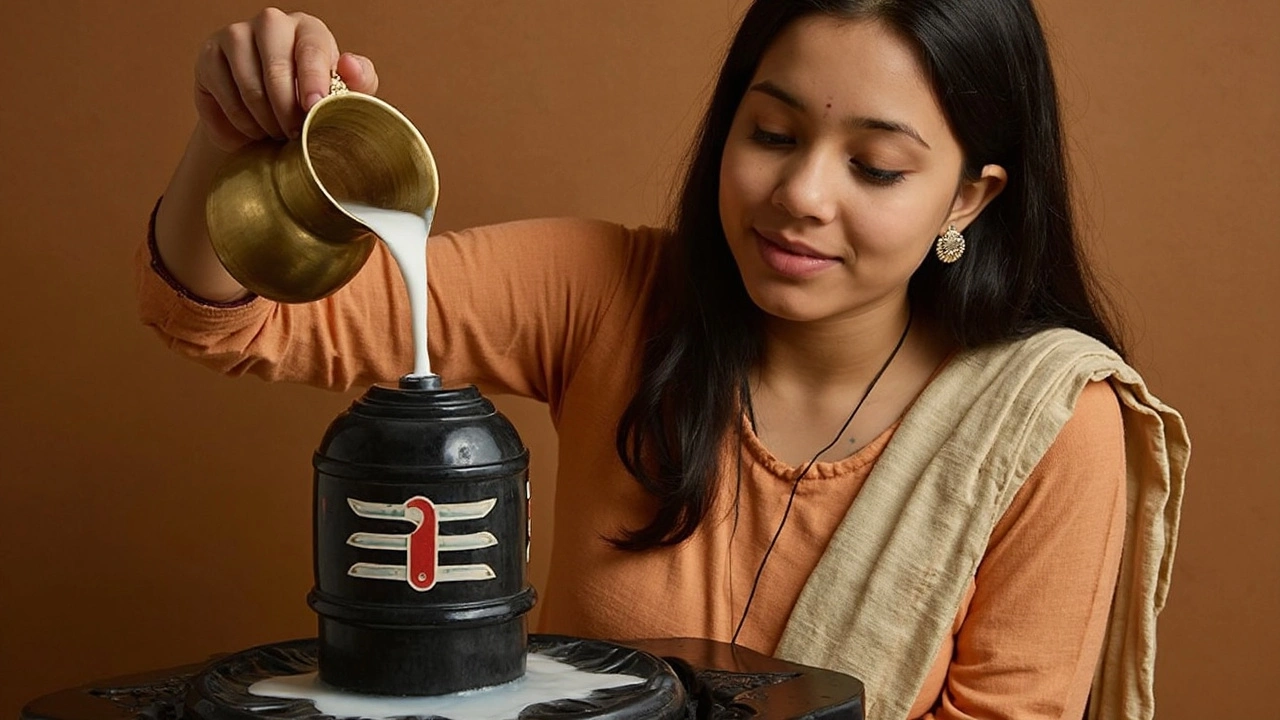Shiva Puja Explained: How to Celebrate the Lord of Destruction
Ever wondered what makes Shiva Puja so special? It’s a simple yet deep ritual that millions perform to honor Lord Shiva, the god of transformation. Whether you’re a first‑timer or someone who’s done it a few times, this guide will walk you through the basics, the must‑have items, and a few handy tips.
Key Elements of a Shiva Puja
The core of any Shiva Puja is the Shiva lingam, a stone or symbolic representation of Shiva’s energy. You’ll also need:
- Fresh water or milk for abhisheka (ritual bathing)
- Bel leaves (Bilva) – these are considered Shiva’s favorite
- Incense sticks, a small lamp, and camphor
- Flowers, especially white or marigold
- Prayers or mantras such as “Om Namah Shivaya”
All the items are easy to find at a local Hindu store or online. Keep them together on a clean surface; a small table or a dedicated altar works fine.
Step‑by‑Step Guide to Performing Shiva Puja
1. Clean the space: Sweep the area, wipe the altar, and light a lamp to invite positivity.
2. Place the lingam: Set the Shiva lingam in the center. If you don’t have a lingam, a smooth stone or a metal platter can serve as a substitute.
3. Offer water or milk: Gently pour water over the lingam in a clockwise motion. Many devotees also use milk, honey, or yogurt for added sweetness.
4. Apply bel leaves: Hold three fresh leaves and place them on the lingam. The number three represents the three aspects of Shiva – creator, sustainer, destroyer.
5. Light incense and camphor: The fragrant smoke clears the mind. After the incense, light a piece of camphor and let it melt over the lingam for a bright, purifying flame.
6. Recite mantras: Chant “Om Namah Shivaya” 108 times or repeat any favorite Shiva hymn. You can use a rosary (mala) to keep count.
7. Conclude with prasad: Offer sweets or fruit as prasad (blessed food). Distribute it among family members or guests.
That’s the basic flow. You can extend the puja with additional prayers, reciting stories from Shiva’s myths, or playing devotional music.
Special Days for Shiva Puja
Maha Shivaratri, the “Great Night of Shiva,” is the most popular day for a full‑night puja. Devotees fast, stay awake, and repeat mantras till dawn. Other auspicious days include the 13th lunar day (Trayodashi) of each month and the month of Shravan (July‑August), when many people perform daily Shiva worship.
Remember, the essence of Shiva Puja is devotion, not perfection. Even if you miss a step, the sincerity of your heart matters most. Keep the space clean, stay focused, and enjoy the calm that follows.
Feeling ready? Gather your items, set up a small altar, and try the puja tonight. You’ll discover how a simple ritual can bring peace, focus, and a deeper connection to Shiva’s transformative energy.

On July 28, 2025, the third Sawan Somwar celebrates Shiva devotion but overlaps with the tricky Bhadra Yoga period. Worshippers are urged to observe rituals during safe muhurat hours, focus on devotion, and apply remedies like charity and aarti for best results.
